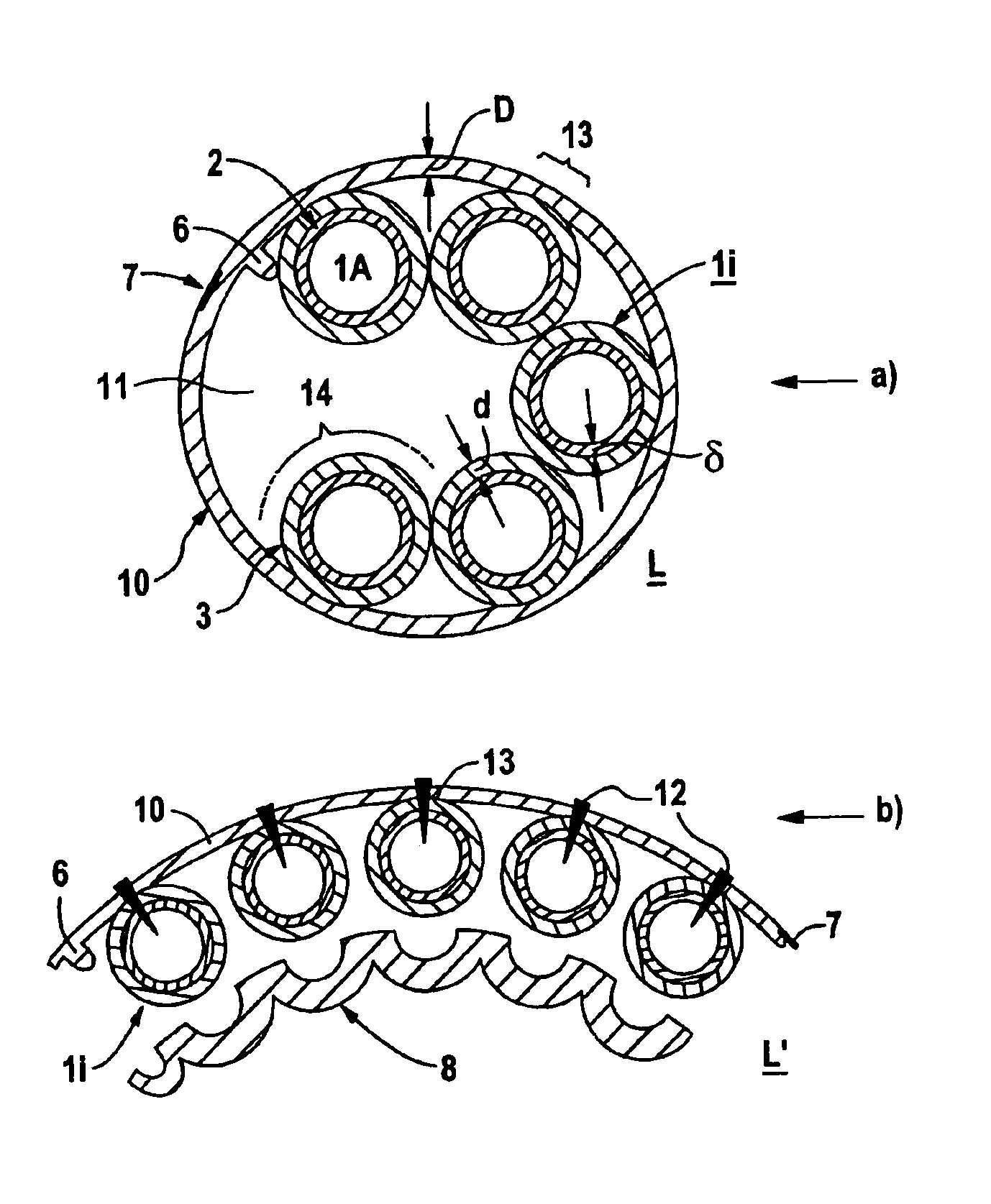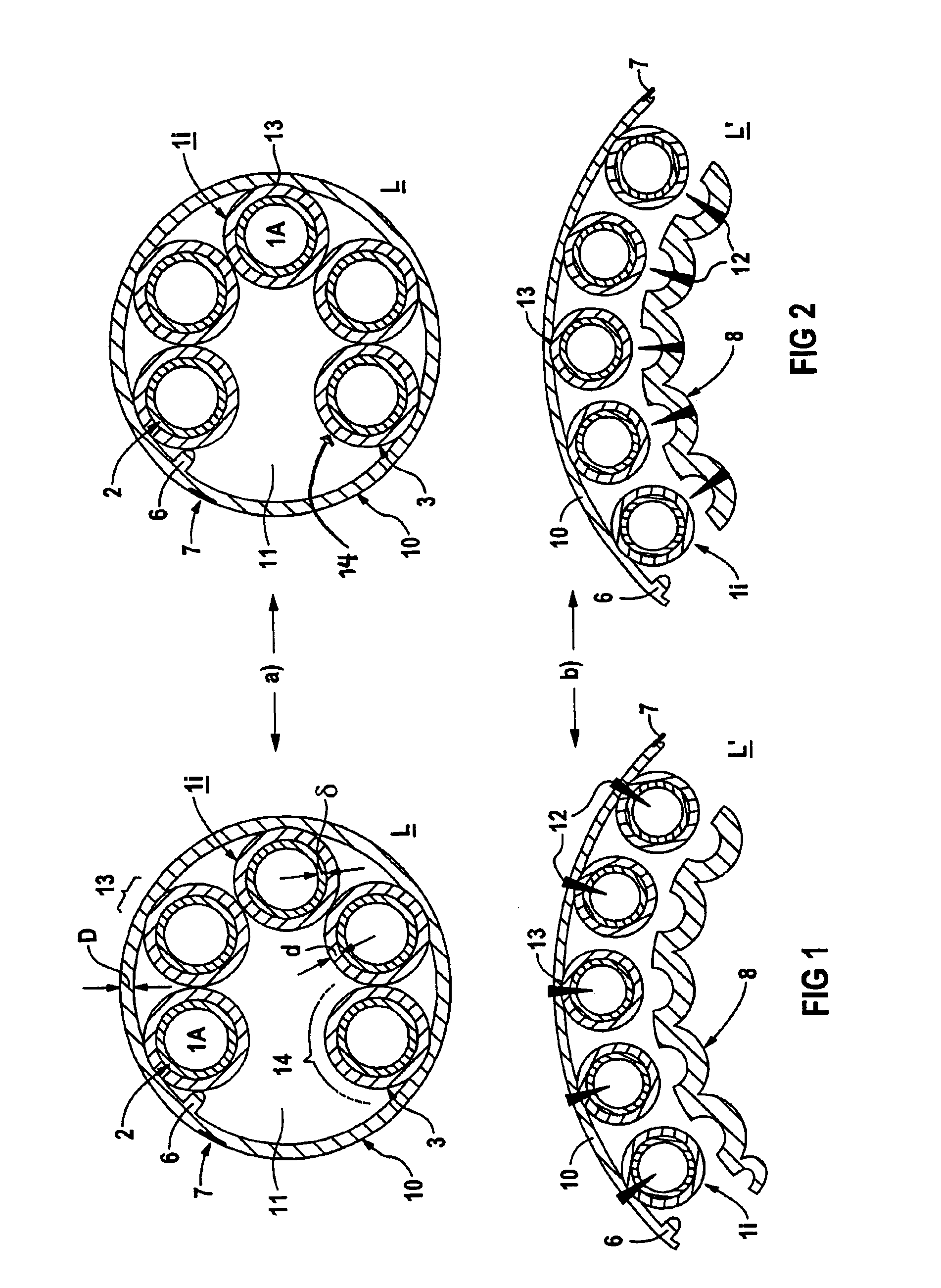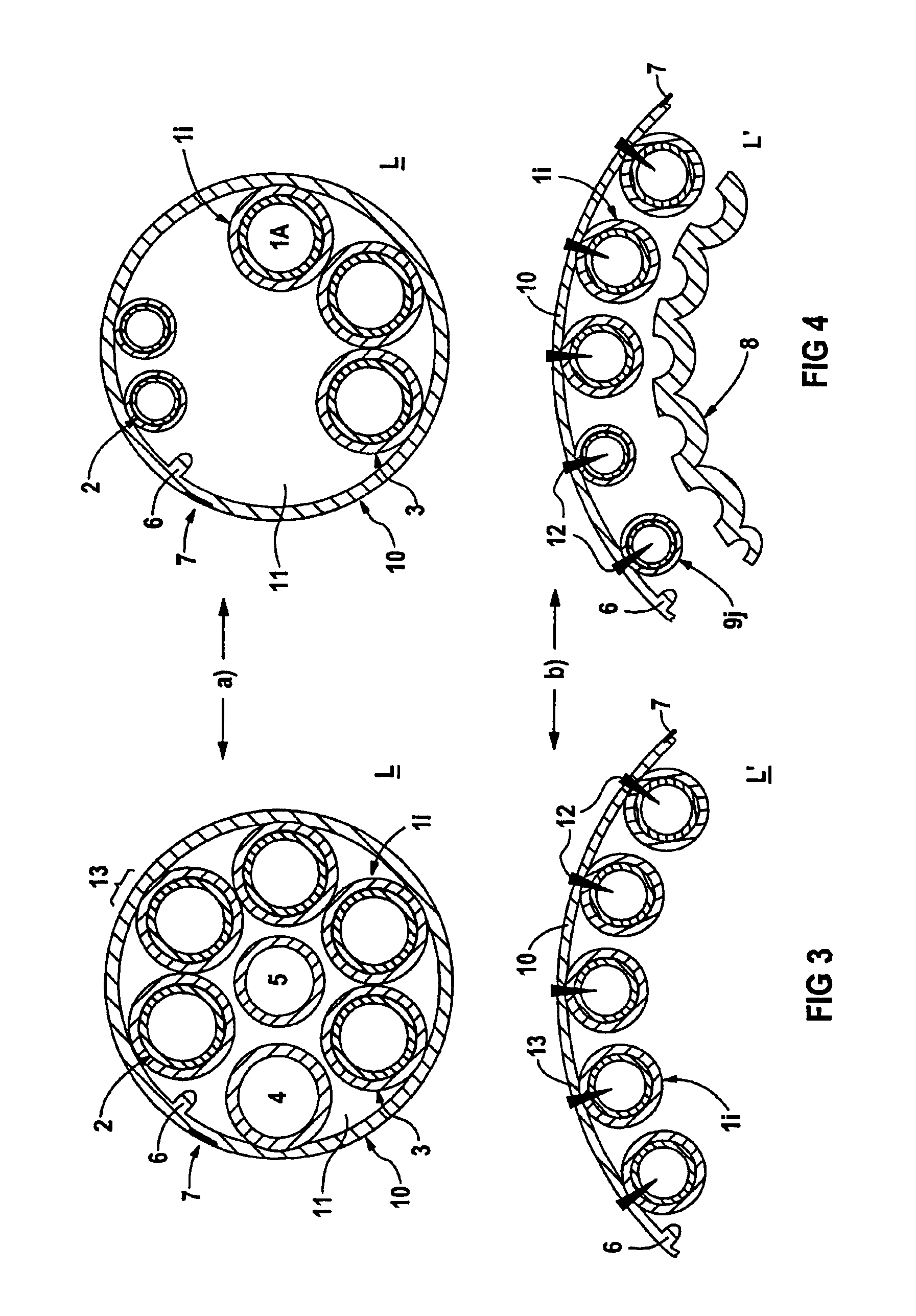Multi conductor arrangement for transferring energy and/or data
a multi-conductor, energy-transfer technology, applied in the direction of insulated conductors, power cables, cables, etc., can solve the problems of complex contact-making mechanisms that have to be designed and provided, time-consuming contact-making process, and product stiffness, so as to simplify the laying of the bus system, reduce the effect of stiffness and speed up the production speed
- Summary
- Abstract
- Description
- Claims
- Application Information
AI Technical Summary
Benefits of technology
Problems solved by technology
Method used
Image
Examples
Embodiment Construction
[0046]The parts a in the figures each show the cross section through the multiconductor arrangement, which forms a round conductor, with a closed casing-like support 10, while the parts b of the figures each show, at least partially, the round conductor which is, for example, disconnected in one end area. In this case, a number of conductor elements 1i or 9j are firmly connected on the inside of the support to the casing-like support 10 of the multiconductor arrangements, which are denoted by L in the parts a and by L′ in the parts b. The corresponding fixing is in this case provided between the material of the element sheaths 3 and the material of the support 10. In one preferred embodiment, on which the figures in the following text are based, the support and the sheaths are composed of the same material. The support 10 and the sheaths 3 can advantageously be formed at the same time using this material in a single process step, in particular such as an extrusion step, by means of ...
PUM
 Login to View More
Login to View More Abstract
Description
Claims
Application Information
 Login to View More
Login to View More - R&D
- Intellectual Property
- Life Sciences
- Materials
- Tech Scout
- Unparalleled Data Quality
- Higher Quality Content
- 60% Fewer Hallucinations
Browse by: Latest US Patents, China's latest patents, Technical Efficacy Thesaurus, Application Domain, Technology Topic, Popular Technical Reports.
© 2025 PatSnap. All rights reserved.Legal|Privacy policy|Modern Slavery Act Transparency Statement|Sitemap|About US| Contact US: help@patsnap.com



